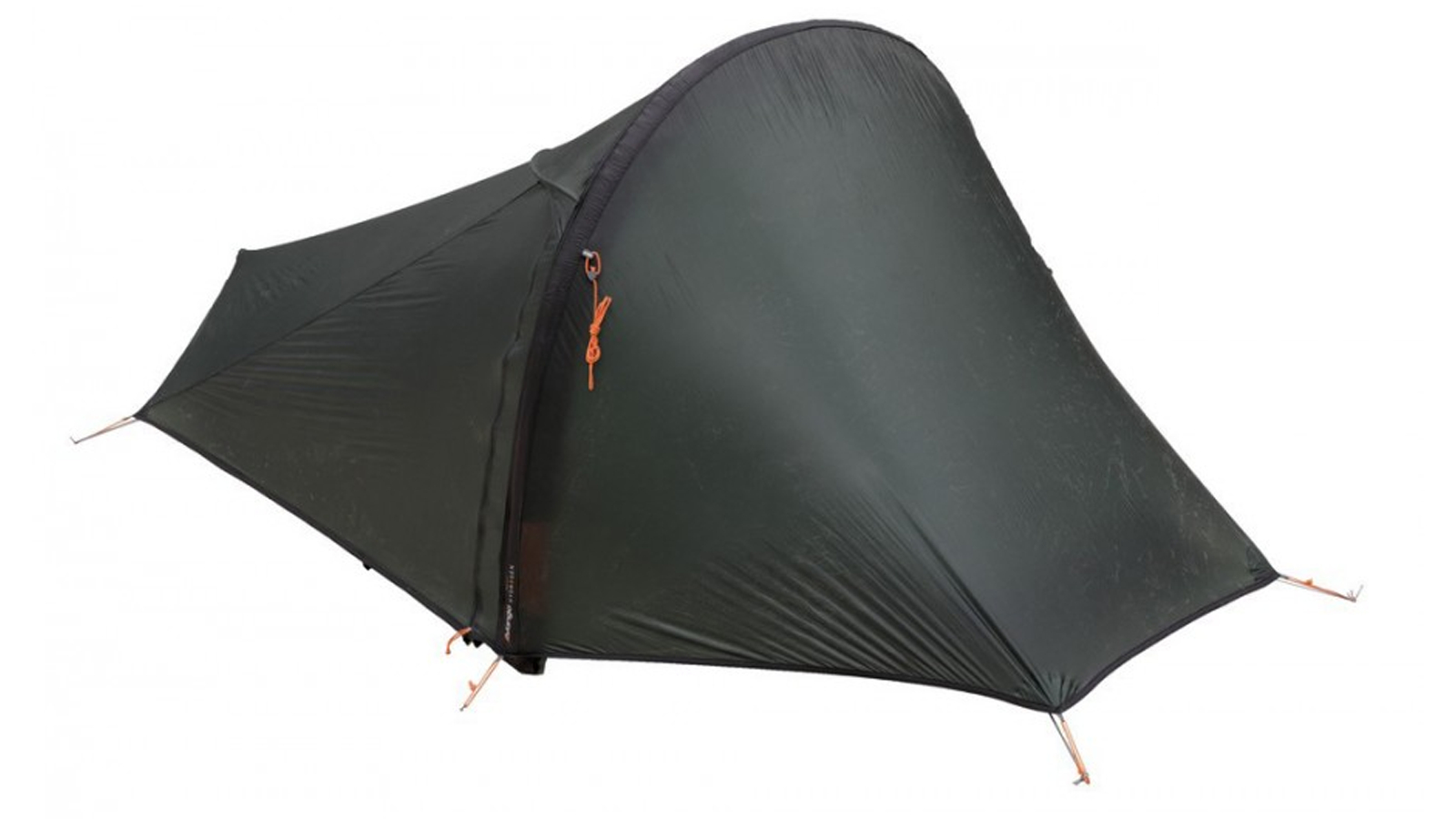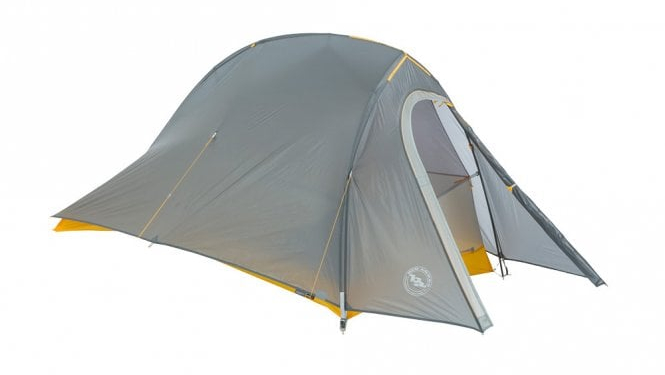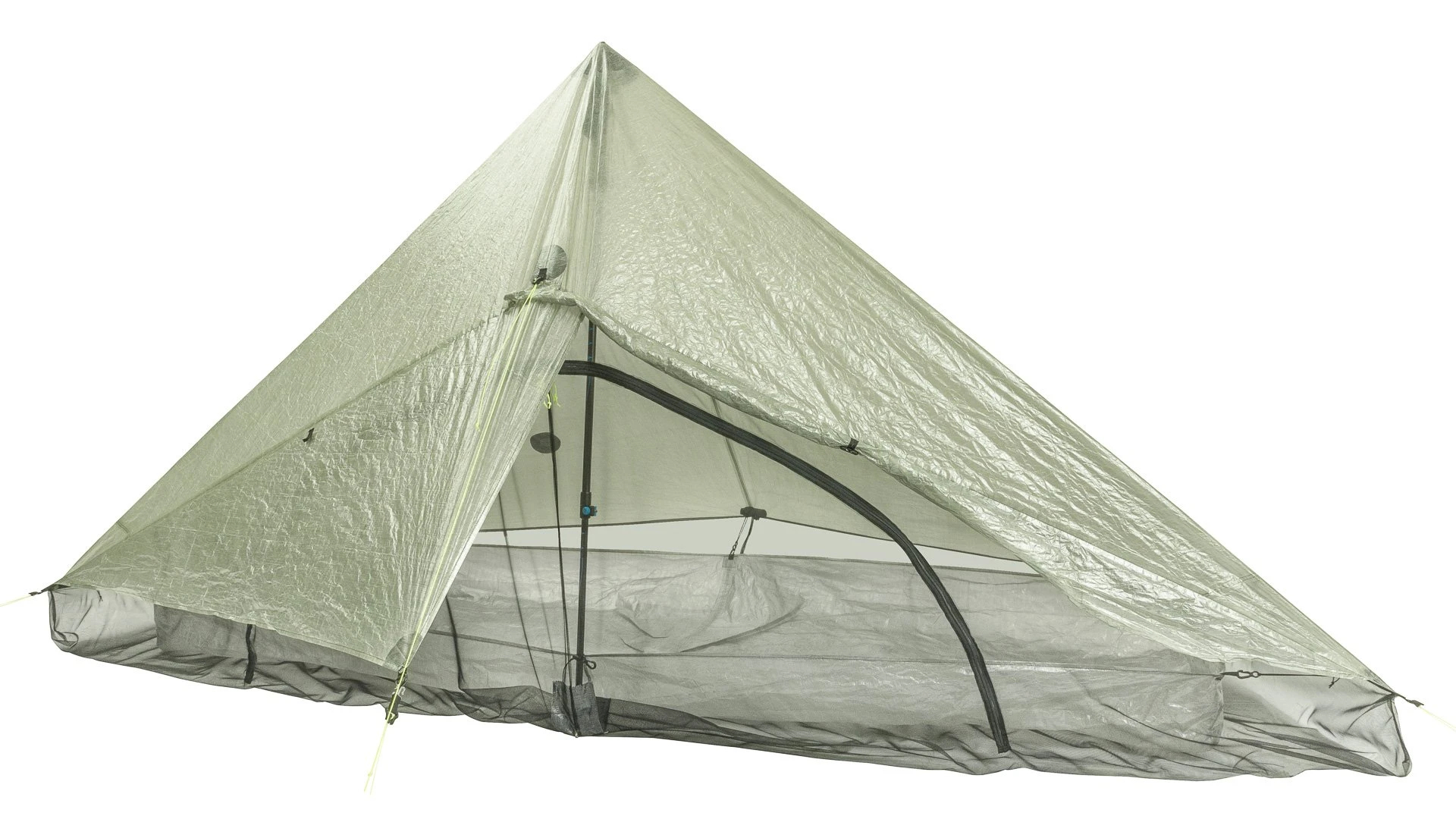Best bikepacking tents: overnight shelters for all weathers
Get out for a comfortable overnight adventure on your bike with the best bikepacking tents

The best bikepacking tents should provide adequate shelter in whatever conditions you find yourself in, without taking up too much precious space or weighing you down.
There are many different approaches to bikepacking sleeping systems but the humble tent is one that provides significantly more protection from rain, wind, insects, and other outdoor elements than the rest. While the thought of sleeping out under nothing but a vast canopy of stars might fill us with wanderlust, the reality is that weather happens.
Choosing the best bikepacking tent should guarantee the best possible night's sleep out in the wilderness, however, if your tent is poorly designed, badly made, or too heavy and bulky, it’s going to have a serious impact on your bikepacking enjoyment.
Luckily tents have been getting progressively smaller, lighter and, with the increasing popularity of bikepacking, better tailored to be transported as part of an ultra-light bikepacking setup. There are now a number of tents that either consider or are specifically designed to meet the needs of bikepackers, including features such as shorter pack sizes and added storage space for things like helmets. Keep reading for our pick of the best bikepacking tents, or skip to the bottom of this guide for advice on what to look for when picking a tent.
Jump to: How to choose the best bikepacking tent
Best bikepacking tent
Why trust BikePerfect

Big Agnes Tiger Wall UL2 Bikepack Solution Dye
Specifications
Reasons to buy
Reasons to avoid
We have mostly focused on one-person tents as these are the smallest and lightest however for riders who adventure in pairs or just want a little more living space to spread out, the Tiger Wall UL2 is one of the best options. The double vestibule makes it easier to get in and out for both occupants or gives more pitching flexibility if being used by a single person. If the company of another person isn’t enough and you prefer a crowd, Big Agnes also does a three-person version of the Tiger Wall.
Big Agnes uses a Shortstik Poleset to help keep pack size down and the whole tent packs up into a compression sack that features daisy chain webbing loops for attaching to handlebars, frames or racks with the poles lashed to the outside of the stuff sack.
Gear organization is easy as the Tiger Wall not only has the vestibules but also internal pockets and helmet-specific storage too so your gear should be easy to organize and out the way once you are in camp mode.
Finally, Big Agnes uses its new Solution-dyed fabric for the Tiger Wall which it says is not only better for the environment as it uses 80 per cent less energy, 80 perc ent fewer chemicals and 50 per cent less water to produce, but is also more durable and UV resistant.

Terra Nova Laser Pulse 1
Specifications
Reasons to buy
Reasons to avoid
Terra Nova is known for making ultra-lightweight kit and the Laser Pulse 1 is the lightest tent on our list. If the staggering 545g weight, with an equally impressive pack size, still seems a bit heavy, Terra Nova does an Ultra version which is claimed to be the lightest tent in the world at just 490g. That 55g saving does come at a serious premium so for most riders the regular Laser Pulse 1 is probably light enough.
Despite its light weight the Laser Pulse is still big enough to almost sit up in and has a little porch space to store a few bags and your shoes. Pitching is straightforward too and the outer and inner can be erected together, so if it's pouring with rain you will be able to quickly get set up and under shelter. The inner and outer can also be pitched separately too should you only want to use part of the tent.

Sea to Summit Alto TR1
Specifications
Reasons to buy
Reasons to avoid
Sea to Summit has clearly spent a lot of time thinking about the features that are important to making a tent that is extremely user-friendly. For a start, thanks to the TensionRidge cross beam the tent has one of the best living areas as the walls are steeper, providing more shoulder and head space when sitting up. This also benefits entering and exiting the tent as the doors are taller as well as allowing the front to be completely opened up. The TensionRidge isn’t just structural either, as Sea to Summit has built exit vents around the top of the tent to give better air circulation and improve condensation management.
The Alto can be erected rainfly first and the DAC poles are all color-coded with the aluminum machined Quick-Connect pole feet for simple setup. Sea to Summit's Quick-Connect system uses these special clips to simply hold the inner tent or tent footprint to the flysheet outer layer.
Attention to detail is superb even down to the stuff sack design. The tent itself packs into three separate bags which can either be linked together or split into three parts for more versatile packing arrangements. Once the tent is set up, the stuff sacks clip into the inside of the tent for internal storage and the pole bag can be turned into a diffusing overhead light source when paired with a head torch for even illumination.

Vango F10 Hydrogen Air Tent
Specifications
Reasons to buy
Reasons to avoid
For bikepackers the most inconvenient part of a tent is the poles. Without a large backpack or the option of substituting your walking poles to the tent structure, they have to be short enough to fit in a frame bag or between the handlebars. However what if you just got rid of the poles entirely? Well, that is exactly what Vango has done with the F10 Hydrogen Air. By swapping out rigid poles for an inflatable pole Vango has created a tent that packs down into a staggeringly small 1L stuff sack. For comparison, that's about as small as some bivy bags.
Going poleless has other advantages as well. The F10 Hydrogen Air can be set up extremely quickly as, despite being a double-wall tent, the inner and outer are attached so it's just a case of picking your sleeping spot, laying the tent out, pump up the AirBeam pole and stake it out. While your bike pump will likely be your go-to for inflation, Vango says you can also use a CO2 canister. When it comes to breaking camp the tent can just be deflated, unpegged and stuffed away quickly.
Space is on par with other low profile one-person tents and the side entrance with inner mesh door opens out wide making it easier to access the tent. In terms of weatherproofing and durability, Vango is one of the most recognized tent manufacturers around so it should last for many years to come.

Alpkit Aeronaut 1
Specifications
Reasons to buy
Reasons to avoid
Another inflatable tent, the Alpkit Aeronaut follows the same recipe as the Vango F10 using an inflated tube as the main method of holding the shape of the tent. The main difference between the two is price, Alpkit is well known for its very competitive pricing and the Aeronaut retails for considerably less than the Vango. This does come at a compromise though, as the weight plus stowed volume is noticeably larger. It still packs down relatively small, so for space-conscious bikepackers looking for a tent on a budget, the Aeronaut is a great option.
The inner and outer are connected to make pitching quick and simple by just inflating the pole sleeve using the Schrader valve and pegging the tent out. Last thing you want is a deflation through the night and Alpkit provides a puncture repair kit with the tent should you spring a leak. A wide side entrance door makes easy work of entry, exit and general campsite hanging out.

Big Agnes Fly Creek HV UL1
Specifications
Reasons to buy
Reasons to avoid
Big Agnes is quickly cornering the market as one the the main players when it comes to bikepacking tents. This is in part thanks to the Fly Creek range which is becoming a classic for those tackling multi day adventures by bike and looking for a balance in durability, pack size and features. The HV is the updated version of the Fly Creek UL1 and takes all the features that were so popular with the original while tweaking the structure to provide improved liveable space. A more square profile makes the living space feel larger without actually increasing square footage, and reworked mounting points on the inner help hold the tent more tightly.
It gets the same beefed-up stuff sack as the Big Agnes Tiger Wall which can be mounted directly to the bike. You also get internal shelves and pockets for your gear as well to keep everything dry.
While the Fly Creek HV UL1 is more than competitive in weight and pack size, Big Agnes does a ‘crazylight’ version for those who want to save even more grams. It’s almost half the weight although over double the cost and does not pack down as small due to the folded length of the carbon Easton poles.

MSR Carbon Reflex 1
Specifications
Reasons to buy
Reasons to avoid
MSR is another big name in the outdoor equipment world and its Carbon Reflex 1 tent is an ultralight option that's great for bikepacking. Despite being a fully featured tent it still packs away small thanks to the lightweight fabric of the rainfly sheet and the Easton Carbon poles. The inner is mostly made from mesh, so ventilation and moisture management is great, although be careful when packing as it's easy to snag and damage the mesh material. Like some of the other tents here the use of mesh on the inner and ability to be pitched in separate parts means, weather permitting, you can opt to sleep without the outer and enjoy the stars.
The MSR has a narrow pitch size so it's great if you often find yourself struggling for space. Despite its small footprint there is a good amount of vestibule space for shoes and bags to be brought under cover. MSR has chosen to make the vestibule zipper-less, instead choosing two strips of Velcro for closure to save overall weight and space. While this is easy to use, it's worth considering your pitching position in case a gust of wind blows it open in the middle of the night.

Zpacks Hexamid Solo Tent
Specifications
Reasons to buy
Reasons to avoid
While Terra Nova has the world record for the lightest tent, Zpacks' Hexamid Solo tent’s modular design is giving it serious competition. In its lightest format the Hexamid is a staggering 294g although once you add the Zpacks bathtub ground sheet and required 48 inch pole the weight will be around 480g. This is mostly down to the Dyneema fabric which is incredibly strong and lightweight and is used in a single wall design, the bathtub groundsheet is also Dyneema although twice as thick as the canopy to ward off punctures from below. Inside the tent there is a fully enclosed insect screen to keep the bugs out.
As we all know lightweight always comes at the cost of features and there are a few quirks with the Hexamid Solo you should be aware of. Firstly and unsurprisingly there is no storage other than the vestibule which does not exactly get close to the ground. Number two is that the Dyneema fabric is a little translucent, that means during the day people will be able to see your silhouette moving about inside and you will be able to see outlines of the outside, Zpacks is a glass-half-full brand describing it as “a more immersed outdoor experience” but light sleepers might want to bring a sleeping mask.
- Bikepacking essentials: our tips to get ready for a bikepacking adventure
- Lightweight bikepacking: top tips to save weight on your bikepacking rig
How to choose the best bikepacking tent
1. Why choose a tent?
For some, the idea of choosing a tent means adding unnecessary weight and packing complications to the bike. However, these days tents have dropped a lot of weight and greatly reduced pack size so if you are looking for some extra comfort it might only cost you 100g over a tarp and bivy setup.
Where a tent excels is that they can be free-standing for a simpler setup and provide far more protection from the elements than a tarp could, greatly increasing your chances of getting a good night’s sleep and feeling refreshed for the next day ahead. Ultimately bikepacking, whether it's just for fun or at the pointy end of an ultra-endurance race is a game of attrition, a guarantee of a reliable night’s sleep could easily be worth the little extra weight to ultimately ride faster or have more fun.
2. Different types of tent
Tents are usually broken up into a few different styles: freestanding, semi-freestanding and non-freestanding. The difference between these three types of tent comes down to how they are erected. Freestanding tents don’t require pegging out as the poles hold the tent’s shape, this means you can build it and then move it easily to find the perfect sleeping spot. Generally, a freestanding tent will have a double-wall construction, meaning there is a separate rain sheet, although single-wall versions do exist. Freestanding double-wall tents usually provide better protection from the rain and wind and offer more ventilation too. Semi-freestanding tents use the poles for a portion of the structure with additional sections needing to be pegged out to achieve the full tent sizes. True non-freestanding tent designs are less common for bikepacking as they are designed with hiking in mind and use hiking poles as part of the structure although they do exist using short auxiliary poles. The advantage of non- or semi-freestanding tents is a lower pack size and weight.
3. Pack size
While plenty of tents on the market meet the weight and weather protection requirements, bikepacking has a unique limitation that will rule out a large number of ultra-light tents. Pack size of a tent needs to be compatible with your best bikepacking bag setup. If you are using drop bars or storing the poles in a frame bag, double-check that the packed tent and poles will actually fit. It’s also worth erecting the tent before you embark on your first trip as it will allow you to learn how to put it up and most importantly, how to put it all away again.
4. Comfort levels
In bikepacking, there are two things that very rarely go hand in hand, comfort and lightweight. Ultimately the fewer creature comforts, features and space your tent has, the lighter it is going to be. For some, the space to sit up in your tent or easily get out the door is well worth the extra weight while others are just wanting a lightweight shelter to crawl inside for 40 winks. Think about the time you spend at camp, if having a semi-liveable area will make your trip more pleasurable it’s probably worth it. If your sleeping time is counted in minutes rather than hours, being able to read a book in your sleeping bag is not a concern.
It’s worth noting that while a tent says that it comfortably fits one human being, that isn’t always the case. While petite bikepackers probably won’t have any problems it can be an issue even for relatively average-sized people, so it’s worth double-checking the floor dimensions of any tent you are thinking of buying to make sure you are getting the amount of space that you expect.
5. What's included?
Some tent companies aren't just deceiving when it comes to real estate, so make sure you check what is actually included with the tent and confirm whether the stated weights and pack sizes actually include all the items that you need for camping. Otherwise, you won't be able to make a realistic comparison between the tents that you are interested in. While all the main parts of a tent will be included, like outer and inner layers, some brands don’t include items like pegs and poles, and they rarely come with a groundsheet included. Whether you need to purchase a groundsheet very much depends on the tent’s material and the ground that you are camping on.
- Best bikepacking bags: carry your gear and supplies with ease
- Best bikepacking saddles: comfy saddles for multi-day adventures

Graham Cottingham joined the BikePerfect team as our senior tech writer in 2020. With over 20 years of riding experience, he has dabbled in downhill, enduro, and gravel racing. Not afraid of a challenge, Graham has embraced bikepacking over the last few years and likes nothing more than strapping some bags to his bike and covering big miles to explore Scotland's wildernesses. When he isn’t shredding the gnar in the Tweed Valley, sleeping in bushes, or tinkering with bikes, he is writing tech reviews for BikePerfect.
Rides: Cotic SolarisMax, Stooge MK4, 24 Bicycles Le Toy 3, Surly Steamroller
Height: 177cm
Weight: 71kg
